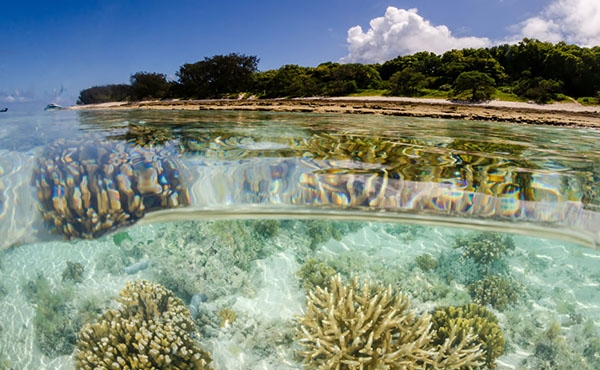95.
Saintilan, N., Horton, B., Törnqvist, T.E., Ashe, E.L., Khan, N.S., et al. 2023, Widespread retreat of coastal habitat is likely at warming levels above 1.5 °C, Nature 621(7977): 112-119.
110.
State of Queensland (Department of Environment Science and Innovation) 2023, Biodiversity status of pre-clearing and 2021 remnant regional ecosystems - Queensland series, Version 6.13 edn.
-
121.
Chamberlain, D., Phinn, S. and Possingham, H. 2020, Remote sensing of mangroves and estuarine communities in central Queensland, Australia, Remote Sensing 12(1): 197.
-
919.
Waterhouse, J., Pearson, R., Lewis, S., Davis, A. and Waltham, N. 2024, 7. Great Barrier Reef ecohydrology, in Oceanographic Processes of Coral Reefs. Physical and Biological Links in The Great Barrier Reef, eds E. Wolanski and M.J. Kingsford, CRC Press, Boca Raton, pp. 105-125.
935.
Jaensch, R. 2005, Wetland Management Profile: Saltmarshes, Department of Environment and Science (Qld).
937.
Meynecke, J., Lee, S.Y., Duke, N.C. and Warnken, J. 2007, Relationships between estuarine habitats and coastal fisheries in Queensland, Australia, Bulletin of Marine Science 80(3): 773-793.
938.
Abbott, B.N., Wallace, J., Nicholas, D.M., Karim, F. and Waltham, N.J. 2020, Bund removal to re-establish tidal flow, remove aquatic weeds and restore coastal wetland services—North Queensland, Australia, PLoS One 15(1): e0217531.
939.
Thomas, B.E. and Connolly, R.M. 2001, Fish use of subtropical saltmarshes in Queensland, Australia: relationships with vegetation, water depth and distance onto the marsh, Marine Ecology Progress Series 209: 275-288.
940.
Taylor, M.D., Becker, A., Moltschaniwskyj, N.A. and Gaston, T.F. 2018, Direct and indirect interactions between lower estuarine mangrove and saltmarsh habitats and a commercially important penaeid shrimp, Estuaries and Coasts 41(3): 815-826.
941.
Perera, N., Lokupitiya, E., Halwatura, D. and Udagedara, S. 2022, Quantification of blue carbon in tropical salt marshes and their role in climate change mitigation, Science of the Total Environment 820: 153313.
942.
Wegscheidl, C., Sheaves, M., McLeod, I.M. and Fries, J. 2015, Queensland's saltmarsh habitats: Values, threats and opportunities to restore ecosystem services, James Cook University, Townsville.
943.
Department of Natural Resources and Mines 2001, Policy for Development and Use of Ponded Pastures, Department of Natural Resources and Mines, Brisbane.
944.
Luke, H., Martens, M.A., Moon, E.M., Smith, D., Ward, N.J., et al. 2017, Ecological restoration of a severely degraded coastal acid sulfate soil: A case study of the East Trinity wetland, Queensland, Ecological Management & Restoration 18(2): 103-114.


